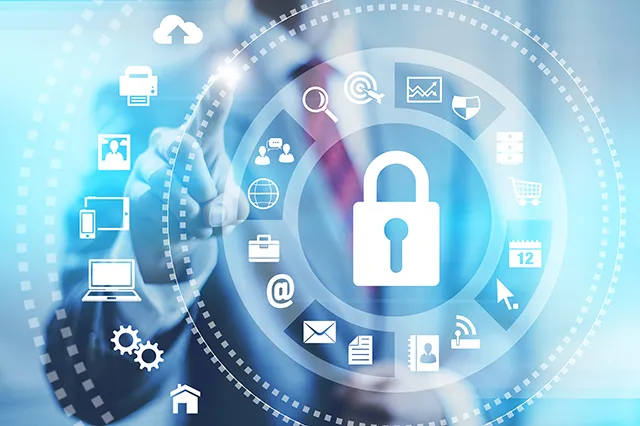The world of online photo editing has made creativity more accessible than ever. With just a few clicks, anyone can adjust colors, remove blemishes, or create professional-looking graphics right from their browser. However, as convenient as online photo editors are, they also come with hidden risks that many users overlook — from data theft and malware to image misuse and online scams. If you love experimenting with online editors, it’s time to learn how to stay safe while doing so.
The Rise of Online Photo Editors
Gone are the days when photo editing required heavy desktop software. Now, platforms like Canva, Fotor, and Pixlr have become household names, offering quick fixes and creative templates for social media, blogs, and marketing materials. But this digital freedom comes at a cost — your personal data and creative content can easily fall into the wrong hands if you’re not careful.
Why Photo Editing Safety Matters
Many online editing tools request access to your storage, cloud accounts, or social media profiles. This access, while necessary for uploading and sharing, can be exploited by malicious actors. Cybercriminals can use fake editing sites or phishing tools disguised as legitimate software to harvest user information, track browser activity, or even install harmful files on your device.
Even legitimate platforms can pose risks if they lack strong security measures. For instance, uploading personal photos — such as selfies, ID scans, or family pictures — to unsecured servers could expose your data to leaks or unauthorized usage.
Common Dangers in Online Photo Editing
- Fake Editing Websites – Some fraudulent sites mimic well-known photo editors to trick users into sharing information or downloading malicious files. These pages may look convincing but can redirect users to scam sites or install spyware.
- Data Misuse – Certain apps or web-based tools collect user data for “analytics” or “personalization.” In reality, these details can be sold to advertisers or third parties without explicit consent.
- Copyright and Ownership Issues – When uploading photos, users may unknowingly agree to terms that grant the platform rights to use or modify their images.
- Hidden Malware in Downloads – Offline editing tools, especially cracked or “free premium” versions, often contain hidden malware that can compromise devices or steal personal data.
Spotting Safe Platforms from Scams
To avoid falling for online scams, users must learn to differentiate legitimate editing tools from fake ones. Check whether the site uses HTTPS, look for clear privacy policies, and avoid platforms that ask for unnecessary permissions or payment details upfront.
For instance, if a photo editing tool requires you to download a suspicious plugin or pay through an unfamiliar channel, that’s a red flag. It’s also wise to check online reviews and feedback from reputable tech communities before signing up.
If you ever come across sites that seem too good to be true — offering free premium editing features or “AI-powered tools” without proper verification — it’s best to double-check their legitimacy through trusted resources like winnascam.com. The site provides helpful information for identifying online scams and protecting yourself from deceptive platforms that pose as legitimate services.
Tips to Protect Your Data and Devices
- Use Trusted Websites Only
Stick to well-known, reputable platforms. Avoid links sent through social media ads or random pop-ups. Bookmark official pages and verify URLs before logging in. - Avoid Uploading Sensitive Images
Never upload personal identification documents, credit card photos, or private family pictures to cloud editors. Treat every upload as potentially public. - Read Privacy Policies Carefully
While few people read them, privacy policies reveal how your data and images are stored, shared, and used. Always opt for platforms that explicitly state they do not retain or sell user content. - Keep Your Software Updated
Always update your browser, antivirus, and firewall. New security patches protect against evolving online threats. - Use Strong Passwords and Two-Factor Authentication
Create unique passwords for each account and enable two-factor authentication (2FA) whenever possible. This helps safeguard your profile even if your credentials are compromised. - Check File Permissions
When using mobile editing apps, check which permissions they request. An editor that needs microphone or location access likely doesn’t need those for photo editing — that’s a warning sign. - Scan Files Before Downloading
Before saving edited files, use antivirus software to scan for potential malware or harmful scripts embedded in downloads.
The Role of AI and Cloud-Based Tools
AI-driven editors are revolutionizing the industry — automatically enhancing images and removing imperfections. Yet, AI tools also raise privacy questions. Some platforms store your photos to “train” their models, meaning your images might be analyzed or reused. Users should be aware of these practices and choose services with transparent data management policies.
For a more technical perspective, Cybersecurity & Infrastructure Security Agency (CISA) provides excellent guidelines for individuals and creators to protect themselves online. Their cybersecurity tips apply not only to editing tools but to any cloud-based platform where personal or creative data is shared.
Building a Safe Editing Habit
Developing good digital hygiene habits is the key to safe and worry-free creativity. Start by auditing which editing tools you currently use — uninstall unused apps, delete old accounts, and revoke access permissions from your social media profiles. Always double-check payment options, subscription renewals, and sharing settings before using a platform.
Moreover, remember that even if a site seems professional, scammers constantly adapt their methods. The best defense is awareness.
Final Thoughts
Online photo editing should be a fun, creative experience — not a security risk. As users, we have the responsibility to protect our privacy and creative content by choosing safe tools, reading the fine print, and staying alert against scams. By practicing caution and staying informed, we can continue enjoying the benefits of digital creativity while keeping our data — and ourselves — safe online.

